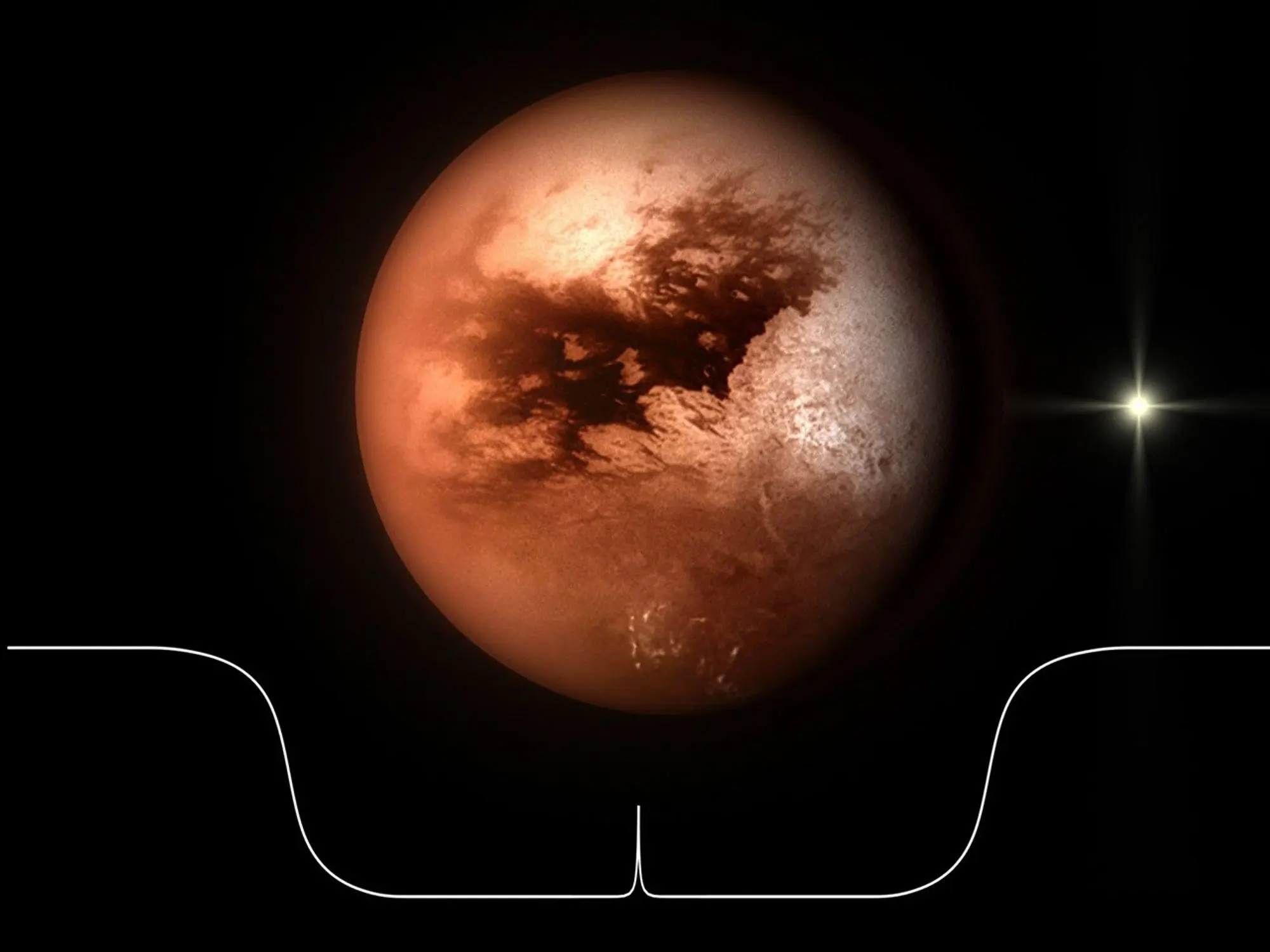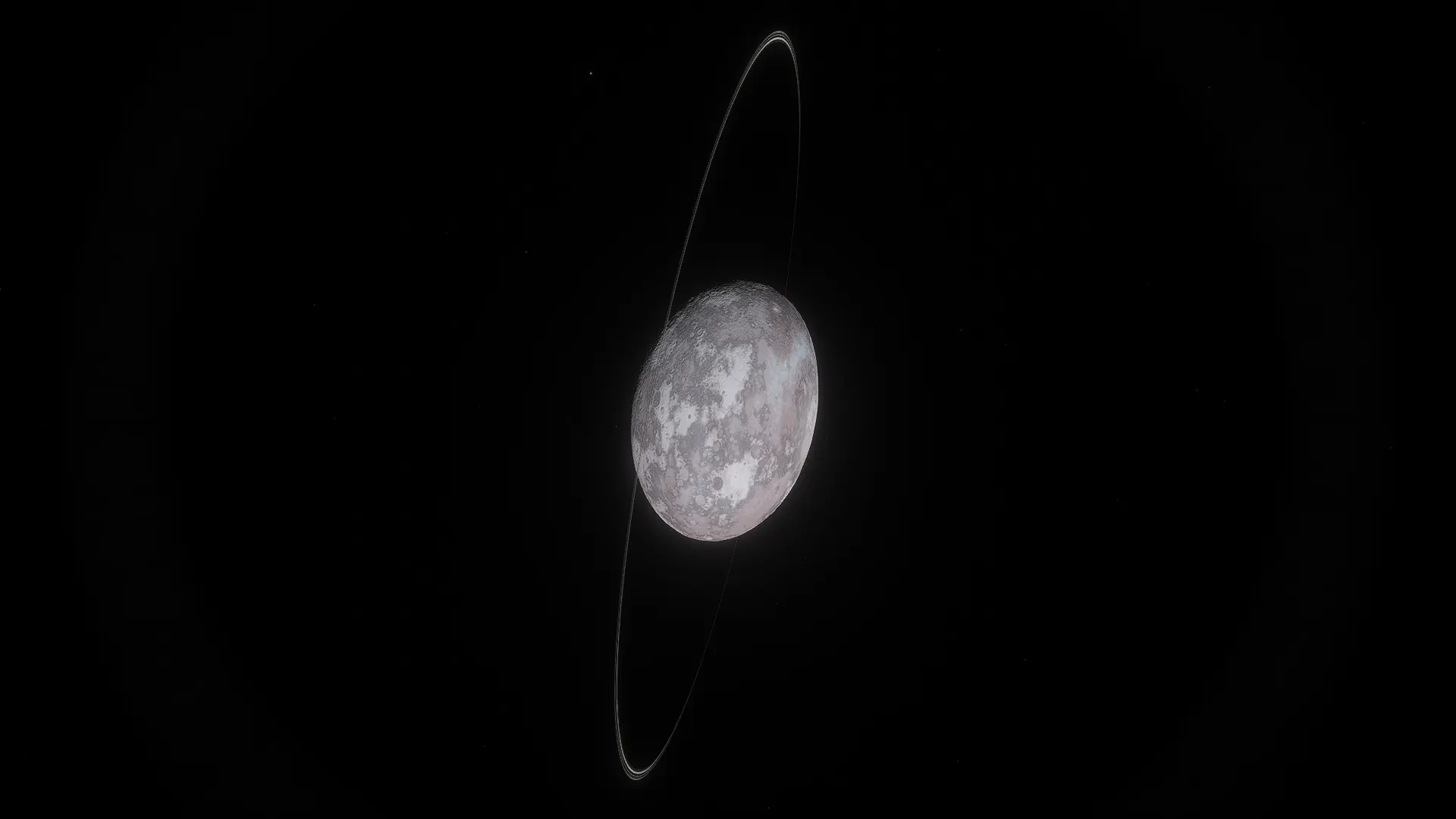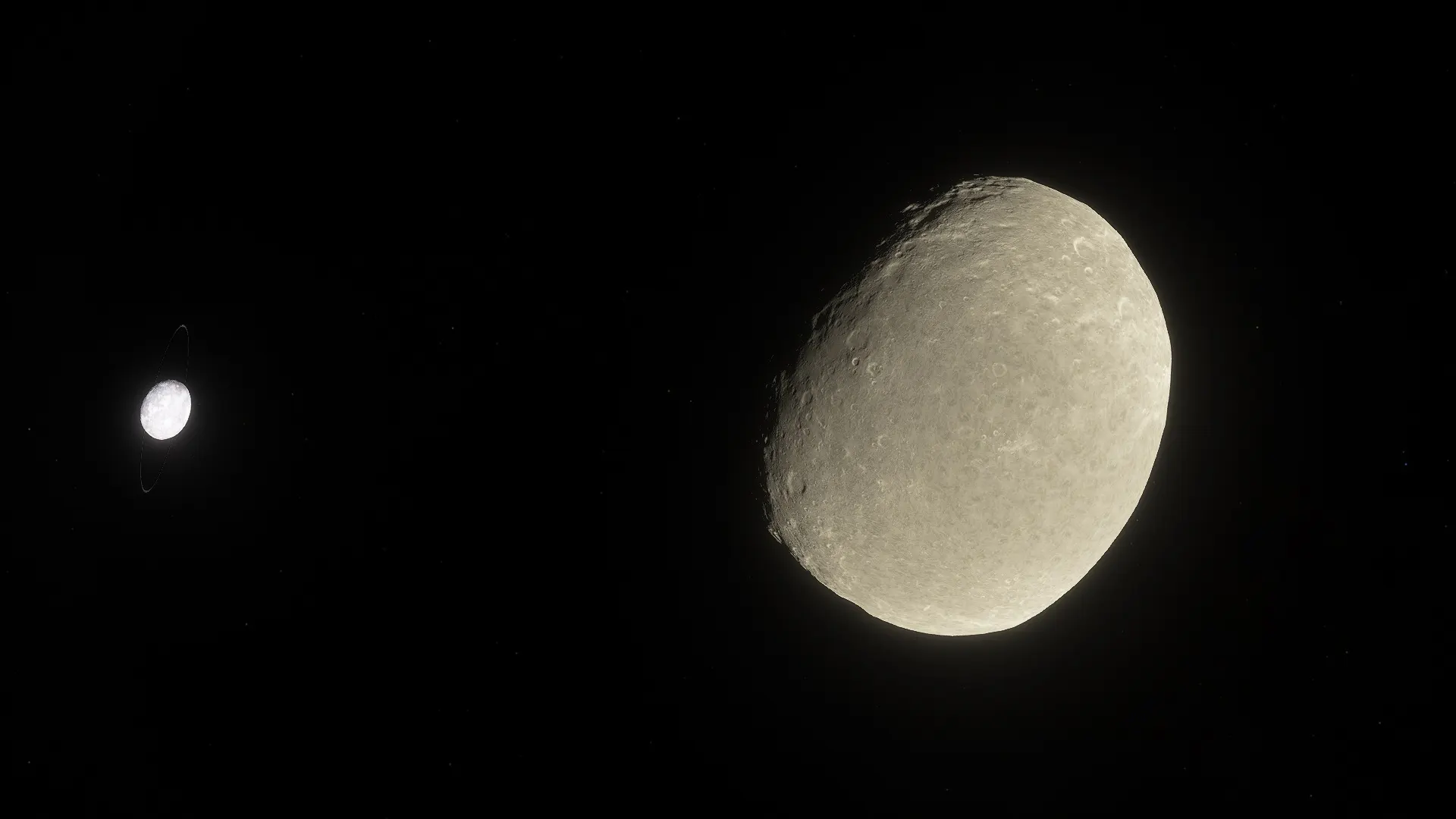Far past the orbit of Neptune lies the dwarf planets - agglomerations of rock and ice that were too small and far apart to form a large planet. One such object is Haumea, an odd egg-shaped dwarf planet complete with diffuse rings and a relatively large moon. So odd, in fact, that it warrants further investigation by us, in the form of a tour brought to you by the flagship TheSpacer probe.
Haumea is an icy grey world deep within the Kuiper Belt. It orbits the Sun at a mean distance, or semi-major axis, of 42.9 astronomical units (AU), not too dissimilar to Pluto’s 39 AU. Its name is derived from the Hawaiian goddess of childbirth and fertility. Its orbital eccentricity - the measure of how ‘squished’ the orbit of the object is compared to a perfectly circular orbit - is 0.2, and its orbit is inclined relative to the plane of the ecliptic (so the plane in which the planets orbit) by an angle of 28.2 degrees. It has a projected mass 0.05 that of the moon, and a density of 1.9 grams per centimeter cubed, pointing to the existence of an ice mantle under its surface. Two satellites orbit it, named Hi’iaka and Namaka, which in Hawaiian mythology were the children of Haumea.
Upon closer inspection, these images of Haumea reveal its oblong, egg-like shape. More strictly, it’s an ellipsoid - a 3D ellipse. Planetary objects of this shape are exceedingly rare; other instances of egg-like planets are those that are tidally disrupted, which are exceedingly rare. It’s not that Haumea is too small to experience ‘rounding’ through gravity (called hydrostatic equilibrium) - its got a mass 0.05 times that of our moon, which should be more than enough to ensure its rounding. The large white dot to the west-southwest of Haumea is its largest moon, Hi’iaka.
The reason for its shape lies not in its formation, but in how fast it rotates. With a day on Haumea lasting only 3.92 days, its rotation is fast enough that the magnitude of its rotational torque is much higher at its equator than at its pole. This imbalance in the force along the surface of the body eventually distorts it, as the centripetal force required at the equator for the object to remain stable is far higher than at the poles (where the angular speed of a point would be lower), resulting in the ‘bulging’ we see.
A paper by Ortiz and Collaborators muddles the mystery even further. By observing Haumea at occultation with another star, Ortiz was able to detect irregularities in the light from Haumea. Occultation refers to when a solar system object moves directly in front of a background star, blocking its light for a brief moment. When a single object occults a star, we expect there to be just one dip in the light measured from the star, which we can visualise using a ‘light-curve’. Ortiz and Collaborators were hoping to use this process to gain better insight into the physical dimensions of Haumea, as the duration to which the star’s light is obscured can allow us to calculate its diameter especially if we know the orbital semi-major axis. However, instead of the single dip they expected, they actually saw the star dim thrice, with two of the dips in brightness being smaller and briefer than the main dip, as well as being of equal magnitude. These results point to the existence of a ring around Haumea (which would occult the star twice).

Though rings around small objects have been sighted - see the case of Chariklo - they’re still exceedingly rare by all standards. To make this ring system even weirder, it exhibits a 3:1 spin-orbital resonance with Haumea, meaning that for every 3 rotations Haumea completes, the ring completes 1 full orbit.

The odd properties of Haumea don’t end there. Hi’iaka, the closer one of its moons, has a mass 0.5% that of Haumea, meaning that it is massive enough to displace the center of mass of the lunar system from Haumea. Haumea, aside from orbiting the Sun, therefore happens to ‘wobble’ as it orbits the common center of mass. These characteristics are common amongst Kuiper Belt objects - see Pluto and Charon for an example. However, what makes this moon truly ‘weird’ is its rotational period, the length of which are far shorter than what models predict. An orbital period of 49.5 days corresponds roughly to an orbital radius of 36 Haumea radii. At these distances, the difference in the gravitational force along the length of Hi’iaka is expected to produce a tidal force, creating tidal bulges that oppose the rotation of the moon, effectively ‘braking’ it. These tidal forces are expected to have slowed down Hi’iaka’s rotation to the point where the moon would have a day the length of its orbital period.
However, this was not what a group led by Hastings and Collaborators found. Data from the Hubble Space Telescope (HST) revealed that the actual rotational period of Hi’iaka was 120 times faster than what we expected, at 9.8 hours. Hypotheses, ranging from the fracturing of a larger moon into both Hi’iaka and Namaka to Hi’iaka having free obliquity (meaning that no force has forced the moon to orient a different way, allowing its axis of rotation to rotate), have been floated to attempt solving the issue.

There’s much still to gain in scientific value from a close-up view of the far-flung Kuiper Belt Objects. It is my hope that a mission of substantial scale is sent to this oddity of an object, so that we gain more insight into the evolution of the outer solar system.
Like what you see? Feel free to subscribe to receive updates whenever we post.